

|
|
|
||
| Line 235: | Line 235: | ||
In 1960 an anthology was edited ''[[La espiga amotinada]]'', which brought together the major group of poets: Juan Banuelos, Oscar Oliva, Jaime Augusto Shelley, Eraclius Zepeda and Jaime Labastida. Literary magazines were one of the main vehicles for disseminating the writers, so they tend to group many of them under the name of the journals in which they were active. ''The Prodigal Son'' was directed by Xavier Villaurrutia, the group ''Los Contemporaneos'' who had Octavio Paz as a coolaborador. Octavio Paz, after leaving founded the newspaper ''Excelsior'', a magazine called ''Vuelta'', which led for many years the national culture, mainly after the death of Martin Luis Guzman in 1976. |
In 1960 an anthology was edited ''[[La espiga amotinada]]'', which brought together the major group of poets: Juan Banuelos, Oscar Oliva, Jaime Augusto Shelley, Eraclius Zepeda and Jaime Labastida. Literary magazines were one of the main vehicles for disseminating the writers, so they tend to group many of them under the name of the journals in which they were active. ''The Prodigal Son'' was directed by Xavier Villaurrutia, the group ''Los Contemporaneos'' who had Octavio Paz as a coolaborador. Octavio Paz, after leaving founded the newspaper ''Excelsior'', a magazine called ''Vuelta'', which led for many years the national culture, mainly after the death of Martin Luis Guzman in 1976. |
||
[[File:Guadalupe_Nettel_5.jpg|thumb|left|200px|[[Guadalupe Nettel]] celebrated for profound exploration of the human condition.]] |
|||
After the death of Octavio Paz, a group of his contributors tried to start a magazine, but the fledgling magazine, ''Letras libres'', failed to have the acceptance of ''Vuelta''. |
After the death of Octavio Paz, a group of his contributors tried to start a magazine, but the fledgling magazine, ''Letras libres'', failed to have the acceptance of ''Vuelta''. |
||
This article has been translated from a Wikipedia article in another language, and requires proofreading. If you are confident enough in your fluency of English and the original language, please proofread it. (August 2022)
|

| Part of a series on the |
| Culture of Mexico |
|---|
 |
| Society |
| Topics |
| Symbols |
|
|
Mexican literature stands as one of the most prolific and influential within Spanish-language literary traditions, alongside those of Spain and Argentina. This rich and diverse tradition spans centuries, encompassing a wide array of genres, themes, and voices that reflect the complexities of Mexican society and culture. From ancient indigenous myths to contemporary urban narratives, Mexican literature serves as a poignant reflection of the nation's essence, inviting readers to explore its rich history, diverse culture, and collective aspirations.
Propelled by visionary writers, Mexican literature has made an indelible mark on global literary discourse. From the Baroque elegance of Sor Juana Inés de la Cruz's poetry to the modernist prose of Carlos Fuentes, Mexican authors adeptly explore themes of identity, history, social justice, and the human experience. Notable literary works such as Juan Rulfo's haunting "Pedro Páramo," Octavio Paz's introspective "The Labyrinth of Solitude," and Laura Esquivel's enchanting "Like Water for Chocolate" showcase the depth and diversity of Mexican literary expression, garnering international acclaim for their profound insights into Mexican culture and society.
The Mexican Revolution of the early 20th century inspired a new generation of writers like José Vasconcelos and Mariano Azuela, capturing the spirit of the times in their works. During the mid-20th century Latin American literary boom, Mexican authors such as Octavio Paz, Carlos Fuentes, and Juan Rulfo gained global recognition for their contributions to world literature. The Death of Artemio Cruz (Spanish: "La muerte de Artemio Cruz") by Carlos Fuentes acclaimed novel, first published in 1962, explores themes of power, corruption, and identity in post-revolutionary Mexico. It has been translated into multiple languages and has garnered widespread critical acclaim. Other notable writers include: Rosario Castellanos, Sergio Pitol, Alfonso Reyes, José Emilio Pacheco, and Elena Garro.
In contemporary times, Mexican literature continues to thrive, with writers like Elena Poniatowska, Yuri Herrera, and Valeria Luiselli exploring themes of migration, urban life, and social justice with depth and nuance. Their works, alongside those of emerging voices, ensure that the tradition remains vibrant and relevant in the 21st century. Hurricane SeasonbyFernanda Melchor is a fiction novel that has made a significant impact on contemporary Mexican literature. Through its compelling narrative and exploration of societal issues, the book has garnered critical acclaim and contributed to ongoing literary discussions.
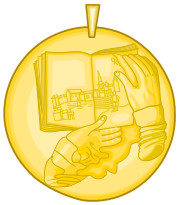
Mexico's literature has its antecedents in the literatures of the indigenous peoples of Mesoamerica and the literary traditions of Spain. With the arrival of the Spanish, a new literature was produced through mestizaje, which made way for a period of creolization of literature in the newly established Viceroyalty of New Spain. The literature of New Spain was highly influenced by the Spanish Renaissance, which was represented in all the Spanish literature of the time, and local productions also incorporated numerous terms commonly used in the vernacular of the viceroyalty and some of the topics discussed in the works of the period shaped a distinctive variant of the Spanish literature produced in Mexico.
During the colonial era, New Spain was home to Baroque writers such as Bernardo de Balbuena, Carlos de Sigüenza y Góngora, Juan Ruiz de Alarcón, Francisco de Castro, Luis Sandoval Zapata, Sor Juana Inés de la Cruz, Diego de Ribera and Rafael Landivar. Towards the independence a new wave of writers gave the initial struggle for the emancipation of national literature from the literature of the Spanish peninsula: Diego José Abad, Francisco Javier Alegre and Friar Servando Teresa de Mier.

Towards the end of colonial rule in New Spain arose figures like José Joaquín Fernández de Lizardi, El Periquillo Sarniento is considered as an emblem of the Mexican literature and the first modern novel written in the Americas. By the second half of that century, works like Los mexicanos pintados por sí mismos, a manners book that gives a rough idea of how intellectuals of the time saw the rest of his countrymen. Towards the end of the century, during the Porfirio Diaz government, Mexican writers inclined towards the dominant European trends of the time.
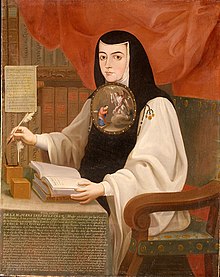
To celebrate the centenary of the Independence of Mexico, there was a literary project surged Antología del Centenario which aimed to collect authors of the first hundred years of Mexico. This was truncated and only the first volume was published in two volumes primarily consisting of collected poetry. The poets of the time that were included were Friar Manuel de Navarrete, Fernando Calderón, Ignacio Rodríguez Galván. Notable modernists of the time included Amado Nervo and Manuel Gutiérrez Nájera. Other notable authors of that time were Luis G. Urbina, Efren Rebolledo, José Juan Tablada, Enrique González Martínez and Ramón López Velarde.
The emergence of the Mexican Revolution favored the development of journalistic genre. After the civil conflict finished, the Revolution theme appeared as a theme in many novels, short stories and plays like those of Mariano AzuelaorRodolfo Usigli. This trend would be an antecedent for the flowering of 'revolutionary literature', which was embodied in the work of writers like Rosario CastellanosorJuan Rulfo. A literature of indigenous themes, which aimed to portray the thoughts and life of the indigenous peoples of Mexico surged along with this revolutionary literature, although ironically, none of the writers were indigenous. The most notable indigenist authors of the time included Miguel Angel Menendez Reyes, Ricardo Pozas and Francisco Rojas González.
In alternative to these mainstream literature, also other literary styles were developed in the country, less known movements being outside the main focus. Among them, the estridentistas (1920s) that included authors such as Arqueles Vela and Manuel Maples Arce. Another relevant movement to the literary history of the country was a group of intellectuals known as Los Contemporáneos (1930s), which unified figures such as journalist Salvador Novo and poets like Xavier Villaurrutia and José Gorostiza.
During the second half of 20th century, Mexican literature had diversified into themes, styles and genres. There were new groups such as Literatura de la Onda (1960s), which sought for an urban, satirical and rebellious literature; among the featured authors were Parmenides García Saldaña and José Agustín; another literary style surged called Infrarrealismo (1970s), which sought to "blow his brains out the official culture"; La mafia cultural (1960s), was composed of Carlos Fuentes, Salvador Elizondo, José Emilio Pacheco, Carlos Monsivais, Inés Arredondo, Fernando Benítez among others. In 1990, Octavio Paz became the only Mexican to date to have won the Nobel Prize for Literature.
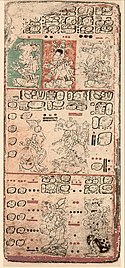
While the peoples of Mesoamerica developed systems of writing, these were not often used to preserve their literature. Most of the myths and literary works of the indigenous peoples of Mexico were transmitted by oral tradition. The peoples of Mesoamerica, despite having developed writing systems, primarily employed pictographic and logosyllabic forms rather than a phonetic writing system. Among these expressions, the Borgia Group codices are regarded by some scholars as exceptional artistic and literary works. While there is scholarly disagreement, it is commonly accepted that the central section of the Codex Borgia contains a narrative related to the creation of the universe, although an alternate hypothesis suggests that it may depict a series of rituals with an unclear purpose.

In addition to the Codex Borgia, the Mixtec codices Becker 1, Nutall, and Colombino depict the life of the hero-ruler 8-Venado and his efforts towards the unification of the Mixtec people. Another significant manuscript, the Boturini Codex or "Pilgrimage Strip," recounts chapters of the Mexicas' migration from northern Mexico to their eventual settlement in Texcoco Lake. However, it is worth noting that some scholars argue that the Boturini Codex is a copy of an older, unidentified document created during the early stages of the Conquest.
Within the rich cultural tapestry of ancient Mexico, a multitude of ceramic artifacts, stone carvings, stelae, and monoliths bear witness to historical, mythical-genealogical, cosmogonic, and legendary narratives. Notably, the Olmecs, Toltecs, Mayas, Nahua, and Mixtec peoples have produced remarkable pieces that capture the imagination.
The Olmecs, often credited as the originators of complex civilizations in Mesoamerica, are associated with the oldest known stone writing. Among their relics, a gravel block named 'Bloque de Cascajal' in Spanish is adorned with glyphs and has been carbon-dated to approximately 3,000 years ago, making it a significant archaeological find. This discovery sheds light on the early development of written communication in the region, highlighting the Olmecs' sophisticated cultural achievements.
We know that one of the activities that were to dominate the novices of priests among the Mexica was the memorization of lyrical works or mythology of their people.[1]
Some of these productions were permanently fixed by writing them down using the Latin alphabet that the missionaries of the 16th century used to transcribe the information they received from the native inhabitants. Modern scholars such as Angel Maria Garibay K. and Miguel Leon-Portilla, have translated these works which were once dispersed in several texts and have reunited or reviewed these works in publications such as in『Visión de los vencidos. Relaciones indígenas de la Conquista』or "Historia de la literatura Náhuatl."
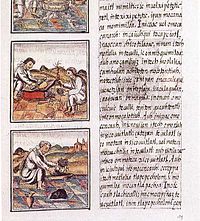
The works of Spanish missionaries in central Mexico contributed to the preservation of the oral tradition of the Nahuatl speaking peoples by writing them down on paper using the Latin alphabet. In this regard the lyrical works of Acolmiztli Nezahualcoyotl (1402–1472), tlatoaniofTexcoco, were preserved and passed down to posterity giving the author the title of Poet King. His works, along with other nobles of the nahuatlaca peoples of the Altiplano such as Ayocuan of Chalco-Atenco, and Tecayehuatzin of Huexotzinco, constitute the largest sample of pre-Columbian works and philosophical lyrics preserved into the modern era.
There are also smaller stocks of Postclassic Era literature recovered among other peoples such as the Purépecha, the Zapotec and Mixtec. The Case of the Mixtec is special as four codices have been preserved which have led to an approach to the study of the history of these people under the imprint of Eight Deer, Lord of Tututepec and Tilantongo. In the Mayan world there are preserved fragments called Books of Chilam Balam.
Another well known pre-Columbian literature is that of the Quiché people who did not inhabit the current Mexican territory, but rather, lived in what is now Guatemala. The Popol Vuh (Book of Counsel) was written in the Quiché language and incorporates two Mayan cosmogonical myths: the creation of the world and falling of Hunahpu and Xbalanque into Xibalba which is the underworld of the Maya.
Outside of Mesoamerica, Arturo Warman forwarded the hypothesis that the verses sung by the Yaquis and Mayo musicians during the performance of the Danza del Venado have their origin in pre-Columbian times and have survived to this day with very little change since then.
Among the prehispanic literature which flourished are:

In the colonial literature of Mexico we can distinguish several periods. The first period is linked with the historical moment of conquest, it chronicles and letters abound.
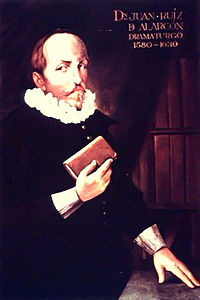
The influence of indigenous themes in the literature of New Spain is evident in the incorporation of many terms commonly used in the common local tongue of the people in colonial Mexico as well as some of the topics touched in the works of the period which reflected local views and cultures. During this period, New Spain housed writers such as Bernardo de Balbuena.
In the colonial literature of Mexico we can distinguish several periods. The first examples of literature are linked with the historical moment of conquest, colonization chronicles and letters. Works and writers:
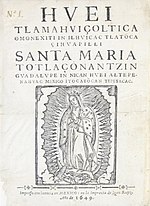

In this period flourished particularly the Mexican variant of the Baroque literature. Many of the most famous authors of the century reached varying success in the area of literary games, with works like anagrams, emblems and mazes. There were notable authors in poetry, lyric, narrative and drama. The Baroque literature in New Spain followed the rivers of Spanish writers Góngora and Quevedo. Carlos de Sigüenza y Góngora, Juan Ruiz de Alarcón, Sor Juana Inés de la Cruz and Diego de Ribera were major exponents of the Mexican literature of this period.
The most notable authors:

Towards the end of the colonial period emerged important figures such as José Joaquín Fernández de Lizardi, whose El Periquillo Sarniento, is considered emblematic of Mexican picaresque alongside other of his novels such as La Quijotita y su Prima and Don Catrín dela Fachenda represented the first novels written in the Americas.
Illustrated writers and classicists included:
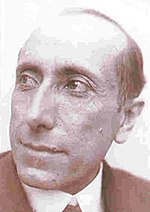
Due to the political instability of the 19th century, Mexico—already an independent nation—saw a decline not only in its literature but in the other arts as well. During the second half of the 19th century, Mexican literature became revitalized with works such as Los Mexicanos Pintados Por Si Mismos, a book that gives us an approximate idea of how intellectuals of the period saw their contemporaries. Towards the end of the century Mexican writers adopted the common tendencies of the period. Two modernist poets that stand out are Amado Nervo and Manuel Gutiérrez Nájera.
During the 19th century there were three major literary trends: romanticism, realism-naturalism and modernism.
Romantic writers gathered around hundreds of associations; among the most important the Academy Lateran, founded in 1836 (José María Lacunza, Guillermo Prieto, Manuel Carpio, Andrés Quintana Roo, José Joaquín Pesado, Ignacio Rodríguez Galván (Ignacio Ramirez). Liceo Hidalgo, was another prominent literary association founded in 1850, (Ignacio Manuel Altamirano, Manuel Acuña, Manuel M. Flores). Unto whom it was labeled as neo-classical or academic, as opposed to the category of "romantic" that was given to the former authors. Other authors belong to this group such as José Manuel Martínez de Navarrete, Vicente Riva Palacio, Joaquin Arcadio Caspian, Justo Sierra and Manuel Jose Othon.
Later, during the rise of positivism aesthetic taste changed. Between realists and naturalists Mexican writers were Luis G. Inclán, Rafael Delgado, Emilio Rabasa, José Tomás de Cuéllar, Federico Gamboa and Ángel de Campo.
Within the modernist superman, original literary revolution in Latin America, there were numerous metrics and rhyming innovations, revival of obsolete forms and mainly symbolic findings. Between 1895 and 1910 Mexico became a core of modernist activity; among famous writers there were Manuel Gutiérrez Nájera, Enrique González Martínez, Salvador Díaz Mirón and Amado Nervo.


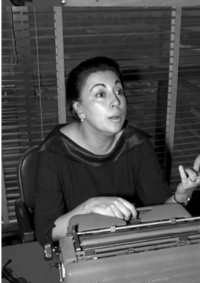
The inception of the Mexican Revolution favored the growth of the journalistic genre. Once the civil conflict ended, the theme of the Revolution appeared as a theme in novels, stories and plays by Mariano Azuela and Rodolfo Usigli. This tendency would anticipate the flowering of a nationalist literature, which took shape in the works of writers such as Rosario Castellanos and Juan Rulfo. There also appeared on the scene an "indigenous literature," which purported to depict the life and thought of the indigenous peoples of Mexico, although, ironically, none of the authors of this movement were indigenous. Among them Ricardo Pozas and Francisco Rojas Gonzalez stand out.
There also developed less mainstream movements such as that of the "Estridentistas", with figures that include Arqueles Vela and Manuel Maples Arce (1920s). Other literary movements include that of Los Contemporáneos, which was represented by writers like Salvador Novo, Xavier Villaurrutia and José Gorostiza. Towards the end of the 20th century Mexican literature had become diversified in themes, styles and genres. In 1990 Octavio Paz became the first Mexican—and up until this point the only one—to win the Nobel Prize for Literature.[2]
In the years between 1900 and 1914 it continued to dominate modernism in poetry and prose realism and naturalism. During this period lived representatives 19th-century literature with members of the Ateneo´s youth.
From 1915 to 1930 there were three streams: a stylistic renewal incorporating influences from the European vanguard (the estridentismo (Manuel Maples Arce, German List Arzubide, Arqueles Vela) and Contemporaries), a group of writers resumed colonial subjects (Xavier Villaurrutia, Jaime Torres Bodet, Jorge Cuesta, José Gorostiza, Salvador Novo), and others who began publishing calls "novels of the Revolution "(the best known is the Underdogs ofMariano Azuela): Martin Luis Guzman, Rafael Muñoz, Heriberto Frías, Jorge Ferretis, Nellie Campobello.
Until the mid-1940s there were authors who continued realistic narrative, but also reached their peak the indigenista novel and reflections involved around on self and national culture. Emerged two new poetic generations, grouped around the magazines Taller y Tierra Nueva.
With the publication of Agustín Yáñez's Al filo del agua in 1947 began what we call "contemporary Mexican novel" incorporating innovative techniques, influences of American writers such as (William Faulkner and John Dos Passos), and European influences from (James Joyce and Franz Kafka), and in 1963, the hitherto known for his articles in newspapers and magazines and its beautiful theater Elena Garro, published which became the initiator of the boom Latin American and founder of the genre known as "magical realism": the novel Recollections of Things to Come , which inspired the Colombian Gabriel García Márquez to write his most celebrated One Hundred Years of Solitude. While during the period from 1947 to 1961 predominated the narrators (Arreola, Rulfo, Fuentes), then emerged poets worth as Rubén Bonifaz Nuño and Rosario Castellanos (also narrator).
In 1960 an anthology was edited La espiga amotinada, which brought together the major group of poets: Juan Banuelos, Oscar Oliva, Jaime Augusto Shelley, Eraclius Zepeda and Jaime Labastida. Literary magazines were one of the main vehicles for disseminating the writers, so they tend to group many of them under the name of the journals in which they were active. The Prodigal Son was directed by Xavier Villaurrutia, the group Los Contemporaneos who had Octavio Paz as a coolaborador. Octavio Paz, after leaving founded the newspaper Excelsior, a magazine called Vuelta, which led for many years the national culture, mainly after the death of Martin Luis Guzman in 1976.

After the death of Octavio Paz, a group of his contributors tried to start a magazine, but the fledgling magazine, Letras libres, failed to have the acceptance of Vuelta. In 1979, Gabriel Zaid made a census of poets published in his anthology Assembly of young poets of Mexico; among those who were included, there were poets as Eduardo Hurtado, Alberto Blanco, Coral Bracho, Eduardo Casar, Eduardo Langagne, Manuel Ulacia, Vicente Quirarte, Victor Manuel Mendiola, Dante Medina, Veronica Volkow, Pearl Schwartz, Jaime Moreno Villarreal and Francisco Segovia. These and the other authors included are those who currently make up the group of authors at the peak of his literary career. Most worked in Vuelta. Present-day notable Mexican poets include Elsa Cross and Efraín Bartolomé.
Influenced by the mass media, social networks, and the Internet, the generation born in the 80s and 90s exhibits a strong inclination towards literature, which finds expression in various digital and print media platforms, such as blogs, internet pages, digital and printed magazines, and electronic books. The impact of this generation on the literary landscape is still challenging to trace. Nonetheless, their presence is evident through the emergence of literary creation schools established in recent decades, including Universidad del Claustro de Sor Juana (UCSJ), Casa Lamm, Centro Morelense de las Artes (CMA), Sociedad General de Escritores de México (Sogem), and Escuela Mexicana de Escritores (EME).
Within this vast and dynamic generation of young and prolific writers, certain individuals have garnered attention for their literary contributions. Among them are Fernanda Melchor, Mercedes Alvarado, Martín Rangel, Aldo Vicencio, Davo Valdez, Iván Cruz, Juan Andrés Herrera, Víctor Ibarra (known by their pseudonyms Genkidama Ñu and Vraiux Dorós), Tania Carrera, Joana Medellín Herrero, Tania Langarica, Itzel Nayelli Palacios, Andrea Chaves, Rojo Córdova, Yaxkin Melchy, Karlos Atl, and many others. While the full extent of their impact is yet to be determined, these individuals represent the active and visible facet of this vast generation of aspiring writers


|
¿Zan yuhqui nonyaz in compolihui xóchitl ah?
¡Ma nel xóchitl, ma nel cuícatl!
I only have to leave similar to the flowers that were perishing?
Even flowers, even songs! |

Lingüística y Literatura

Historia, Ciencias Sociales y Filosofía
|
| |||||
|---|---|---|---|---|---|
| History |
| ||||
| Geography |
| ||||
| Politics |
| ||||
| Economy |
| ||||
| Society |
| ||||
|
| |||||
|
| |
|---|---|
| Sovereign states |
|
Dependencies and |
|
| International |
|
|---|---|
| National |
|